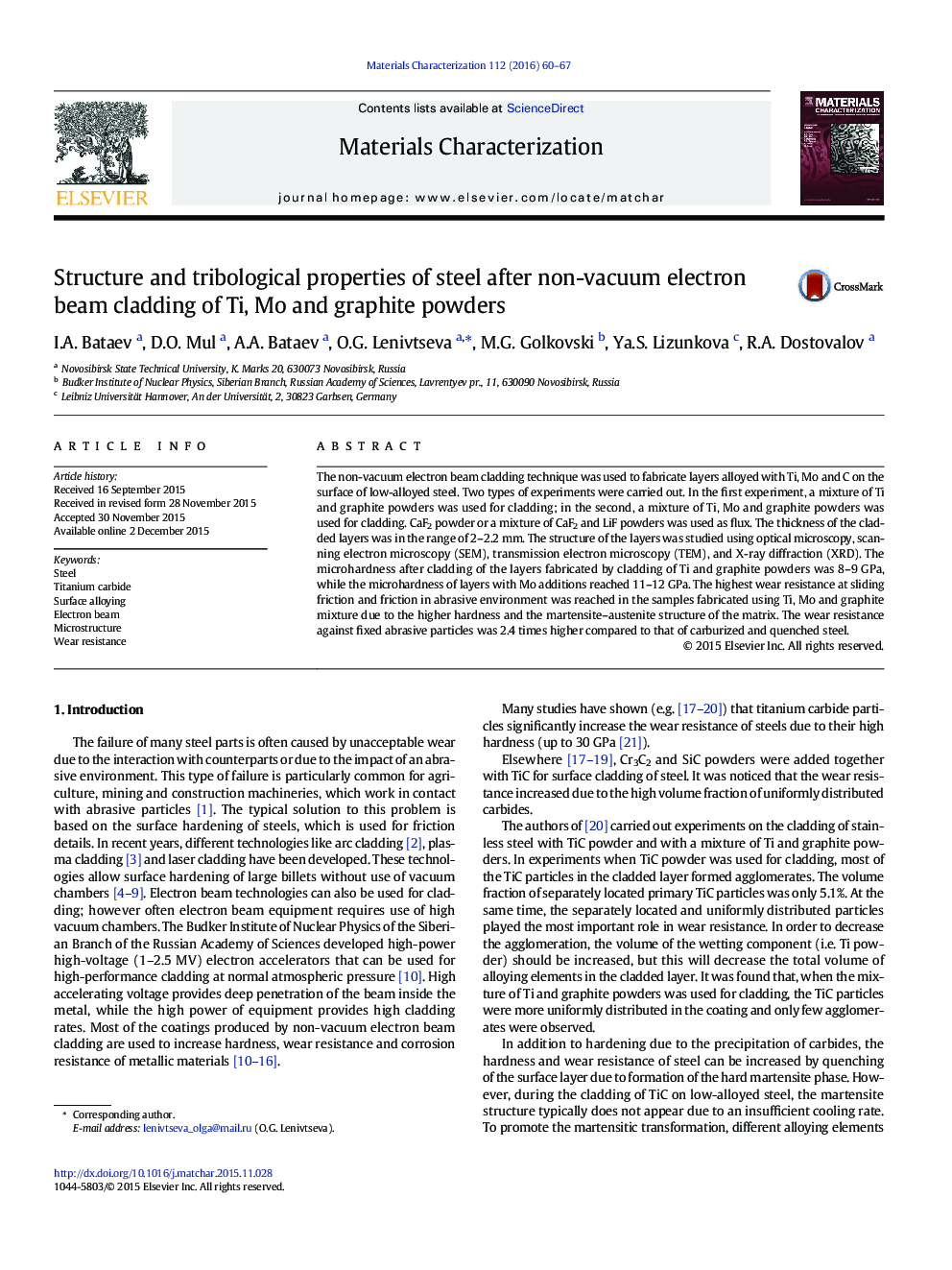| Article ID | Journal | Published Year | Pages | File Type |
|---|---|---|---|---|
| 1570597 | Materials Characterization | 2016 | 8 Pages |
•Ti, C and Mo mixture of powders was cladded using non-vacuum electron beam treatment.•The depth of the cladded layers was 2.0 … 2.2 mm.•The microhardness of layer with Mo, Ti and C additions reached ~ 11 … 12 GPa.•The hardening of the layers caused by the formation of TiC particles and martensitic matrix•Wear resistance of cladded coatings was 2.4 higher than carburized steel.
The non-vacuum electron beam cladding technique was used to fabricate layers alloyed with Ti, Mo and C on the surface of low-alloyed steel. Two types of experiments were carried out. In the first experiment, a mixture of Ti and graphite powders was used for cladding; in the second, a mixture of Ti, Mo and graphite powders was used for cladding. CaF2 powder or a mixture of CaF2 and LiF powders was used as flux. The thickness of the cladded layers was in the range of 2–2.2 mm. The structure of the layers was studied using optical microscopy, scanning electron microscopy (SEM), transmission electron microscopy (TEM), and X-ray diffraction (XRD). The microhardness after cladding of the layers fabricated by cladding of Ti and graphite powders was 8–9 GPa, while the microhardness of layers with Mo additions reached 11–12 GPa. The highest wear resistance at sliding friction and friction in abrasive environment was reached in the samples fabricated using Ti, Mo and graphite mixture due to the higher hardness and the martensite–austenite structure of the matrix. The wear resistance against fixed abrasive particles was 2.4 times higher compared to that of carburized and quenched steel.
